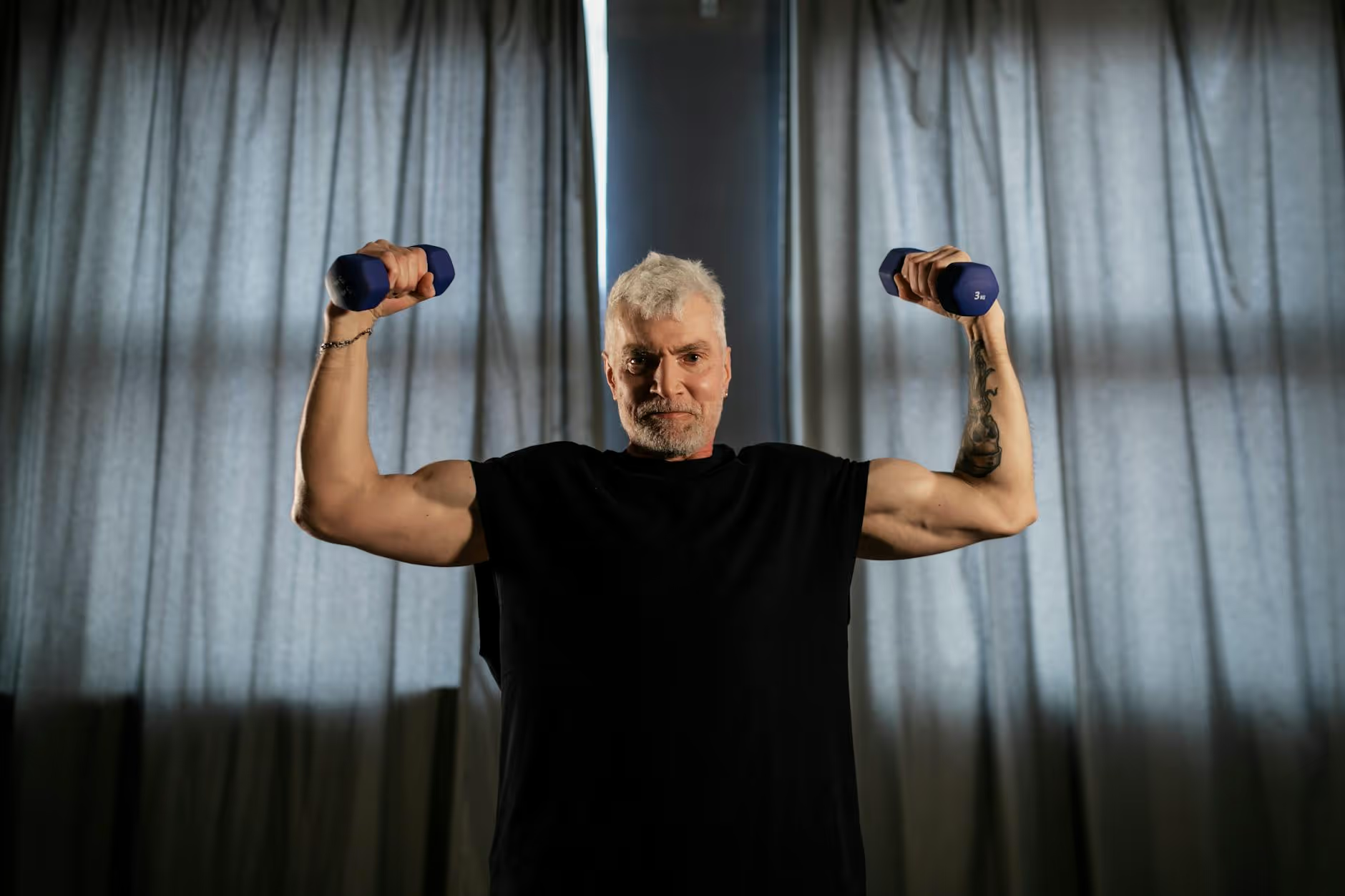How to Transition to a Healthier Lifestyle Gradually
January 3, 2025
A Step-by-Step Guide to Long-term Wellness


Embracing Gradual Change for Sustainable Health
Adopting a healthier lifestyle does not require an immediate overhaul of your current habits. Instead, it demands a steady and thoughtful approach where small, manageable changes accumulate to significant, lasting improvement over time. Whether it involves altering your diet, incorporating physical activities, or improving your mental health, gradual steps are the most sustainable path to long-term health. This article will explore different strategies and tips on how to achieve a healthier lifestyle without feeling overwhelmed.
Start with Your Diet: Small Steps Toward Healthier Eating

How to start eating healthier?
To start eating healthier, it's essential to begin making small, manageable changes right away. Postponing your efforts can lead to inertia, so focus on initiating positive habits now.
Drink More Water
Opt for sugar-free drinks instead of sugary sodas and juices. Additionally, consider cutting out alcohol, as both drinks can add significant calories to your diet.
Emphasize Whole Foods
Prioritize whole foods like fruits and vegetables. Incorporating a variety of these can enhance your nutrient intake while providing necessary fiber.
Plan Meals Wisely
Meal planning is crucial for reducing impulse snacking. By preparing healthier options ahead of time, you can avoid falling back on unhealthy choices when hunger strikes.
Monitor Portion Sizes
Being mindful of portion sizes helps control calorie intake without feeling deprived. Use measuring cups or smaller plates to make portions appear larger, which can psychologically assist with satiety.
Combine with Physical Activity
Coupling dietary changes with regular physical activity is vital. Aim for 150 minutes of moderate exercise weekly, as it significantly boosts your overall health and aids in weight management.
A gradual approach to healthier eating, fostering sustained change rather than seeking quick fixes, is key to long-term health.
Implementing Slow and Steady Lifestyle Changes

Focus on gradual lifestyle changes
Start your health journey with small, manageable modifications rather than drastic overhauls. This approach fosters sustainability and reduces feelings of being overwhelmed. For example:
- Drink a glass of water with each meal to maintain hydration.
- Gradually swap refined grains for whole grains in your meals.
- Aim to fill half your plate with non-starchy vegetables to enhance nutrition.
Integrate physical activity incrementally
Physical activity doesn't have to mean intense workouts. Engage in gentle activities that fit your preferences, such as walking or stretching. Start with short sessions:
- Incorporate 10-minute walks into your day.
- Choose stairs over elevators.
- Add a few minutes of stretching or light exercise sessions a few times a week.
Prioritize hydration and nutrition
Staying hydrated is key to overall health. Simple strategies include:
- Carrying a water bottle ensures you drink enough fluids throughout the day.
- When planning meals, focus on incorporating more fruits and vegetables, aiming for a variety of colors.
Establish a regular sleep schedule
Good sleep hygiene is vital for recovery and overall well-being. Consider these tips:
- Set a consistent bedtime that allows for 7-9 hours of rest.
- Create a calming nighttime routine to signal your body it’s time for sleep.
- Limit screen time before bed to improve sleep quality.
Building Foundations for a Healthier Life

Recognizing the need for change
The first step towards adopting a healthier lifestyle is recognizing the areas in your life that need improvement. Reflect on your current habits and how they impact your health. Contemplating the benefits, like increased energy and improved well-being, can motivate you to initiate change.
Setting specific goals for health improvement
Goal-setting is crucial. Begin with realistic, attainable objectives, such as aiming to lose 1-2 pounds a week or integrating more fruits and vegetables into your diet. Write down your goals and consider what inspires you; this can help solidify your commitment. Having a family member or friend on board can also provide essential encouragement during this journey.
Adapting eating habits
Revamping your eating habits doesn’t require radical overhauls. Start by incorporating one healthy meal a day, gradually increasing the number of nutritious choices. Focus on whole foods—like fruits, vegetables, and lean proteins—while reducing processed items and sugars. Meal planning can also help maintain your focus on healthier options.
Engaging in regular activity
Aim for at least 150 minutes of moderate exercise weekly. Incorporate enjoyable activities—like walking, dancing, or swimming—into your schedule to make physical activity a routine part of your life. Start small, perhaps with 10-15 minutes daily, and gradually increase your activity level as your fitness improves.
Monitoring and adjusting progress
Tracking your progress is key to sustaining motivation. Keep a journal or use apps to document your achievements. Adjust your plans as needed, allowing for setbacks while remaining persistent. Developing new habits takes time, so practice patience, and celebrate small wins to stay encouraged on your path to a healthier lifestyle.
Examples of Transformative Lifestyle Modifications
What are examples of healthy lifestyle changes?
Making impactful changes to your lifestyle can significantly enhance overall well-being. Here are some transformative examples:
Dietary Improvements:
- Balanced Diet: Incorporate more fruits, vegetables, legumes, and whole grains into your meals. Aiming for five servings of fruits and vegetables daily can lower health risks.
- Portion Control: Using smaller plates can help manage portion sizes and trick your mind into feeling fuller.
Physical Activity Goals:
- Regular Exercise: Strive for 150-299 minutes of moderate aerobic exercise each week. Start with gentle activities, like walking or swimming, to build your fitness gradually.
- Strength Training: Include strength exercises two times a week to support muscle health.
Mindfulness and Stress Management:
- Mindfulness Practices: Dedicate a few minutes daily to mindfulness or deep breathing exercises to help mitigate stress.
- Social Connections: Engaging with friends or community can enhance emotional support, making it easier to cope with stress.
Sleep Hygiene:
- Consistent Sleep Schedule: Aim for 7 to 9 hours of quality sleep each night. Establishing a nighttime routine can improve sleep quality significantly.
Embarking on a Path to Better Health
Where do I start if I want to get healthy?
To start your journey towards better health, begin by monitoring your weight, as it provides insight into your progress. Understanding your body's nutritional needs is essential for making informed dietary changes. Focus on limiting unhealthy foods while incorporating more nutritious meals into your diet, like fruits, vegetables, whole grains, and lean proteins.
Maintaining proper hydration is crucial. Aim to drink plenty of water throughout the day and minimize sugary beverages to support body functions and manage weight effectively.
Incorporate regular physical activity; choose exercises you enjoy, whether it's walking, swimming, or dancing, to establish a habit that benefits both your physical and mental health.
Lastly, prioritize mental well-being by managing screen time, ensuring adequate sleep, and being mindful of alcohol consumption. Engaging in mindfulness practices can tremendously support your overall health during this transition.
Additional Strategies For Sustainable Health
| Area | Action Steps | Tips for Success |
|---|---|---|
| Weight Monitoring | Track your progress weekly | Use a journal or app for habit tracking |
| Nutritional Needs | Incorporate more fruits and vegetables | Gradually introduce these into your meals |
| Hydration | Drink water consistently and reduce sugary drinks | Carry a water bottle to stay hydrated |
| Physical Activity | Find activities you enjoy and aim for routine | Start with manageable sessions and build up |
| Mental Health | Practice mindfulness and manage stress effectively | Set aside time daily for relaxation practices |
Navigating the Transition Effectively

What strategies can help transition to a healthy lifestyle gradually?
Transitioning to a healthy lifestyle gradually involves several effective strategies. First, individuals should start small by breaking down their larger health goals into manageable steps. This could mean focusing on changing one behavior at a time, enhancing focus and ease.
Second, making a detailed plan is essential. Setting specific, realistic goals and establishing a timeline allows individuals to stay organized and on track. One could aim to incorporate more fruits and vegetables into meals or set a target to walk a specific number of minutes each day.
Third, tracking progress is vital. Regularly monitoring achievements reinforces motivation. This could be as simple as keeping a journal of meals and activities or using apps designed for this purpose.
Fourth, involving a buddy for support can significantly enhance accountability. Sharing goals with friends or family and checking in with one another can help maintain consistency and provide encouragement.
Finally, maintaining a positive mindset is crucial. Expecting setbacks as part of the journey helps individuals stay resilient and focused on their long-term health objectives.
Setting the Stage for Health Success

How do I start my healthy lifestyle?
To start your healthy lifestyle, prioritize nutrition, which is vital for long-term health. Begin by filling half of your plate with non-starchy vegetables. Opt for whole, unprocessed carbohydrates instead of refined ones to enhance the nutrient quality of your meals.
Incorporating physical activity is essential. Aim for at least 150 minutes of moderate exercise weekly. Simple movements throughout the day, such as taking the stairs or short walks, can significantly boost your activity levels.
Establish sustainable habits by keeping healthy snacks like fruits or nuts within reach. Staying hydrated is also crucial, so strive to drink plenty of water daily. Cooking in bulk can help you avoid unhealthy last-minute choices.
Lastly, set realistic health goals. Focus on gradual changes such as increasing your vegetable intake or introducing a new form of exercise, and don’t hesitate to seek support from family or friends—they can provide the motivation you need to stay on track.
The Power of Patience and Persistence
Transitioning to a healthier lifestyle is a journey that merits patience and persistence. By making small, incremental changes, you link each achievement to a broader transformation of your life. Remember that setbacks are normal and should not deter you. With the correct strategies and support, your gradual efforts can lead to a robust, sustainable healthy lifestyle, yielding benefits that resonate well beyond the initial changes. Embrace the journey, celebrate each small victory, and let your commitment guide you to long-lasting health.
References
- 7 Ways to Jumpstart Healthy Change in Your Life - Harvard Health
- Changing Your Habits for Better Health - NIDDK
- How can I change to a healthy lifestyle? Read our guide. - OrthoIndy
- Making lifestyle changes that last
- Small Changes Matter: Five Tips for a Sustainable, Healthy Lifestyle
- 25 Simple Tips to Make Your Diet Healthier - Healthline
- 10 Ways to Make Lifestyle Changes Easy - ucsd chear
- 12 ways to get your diet back on track - BHF



























































.jpeg)











































































































































































































.avif)























































.jpeg)

































































.jpeg)














.jpg)









































.jpeg)









































































.avif)




.avif)

















































.avif)






































































































































































